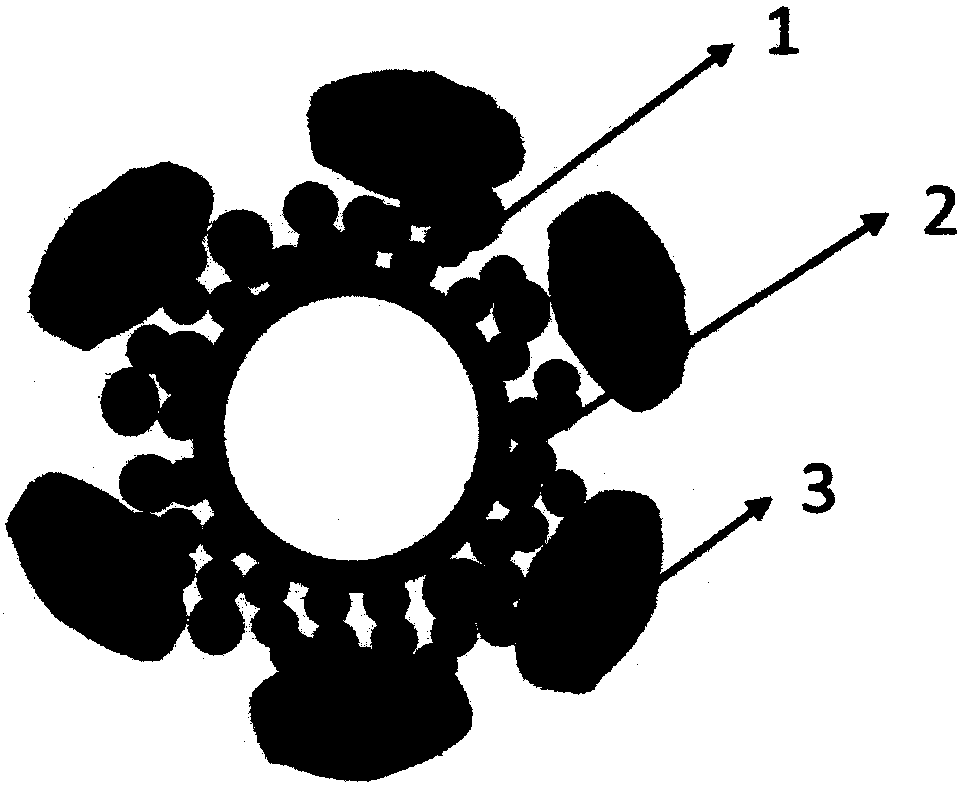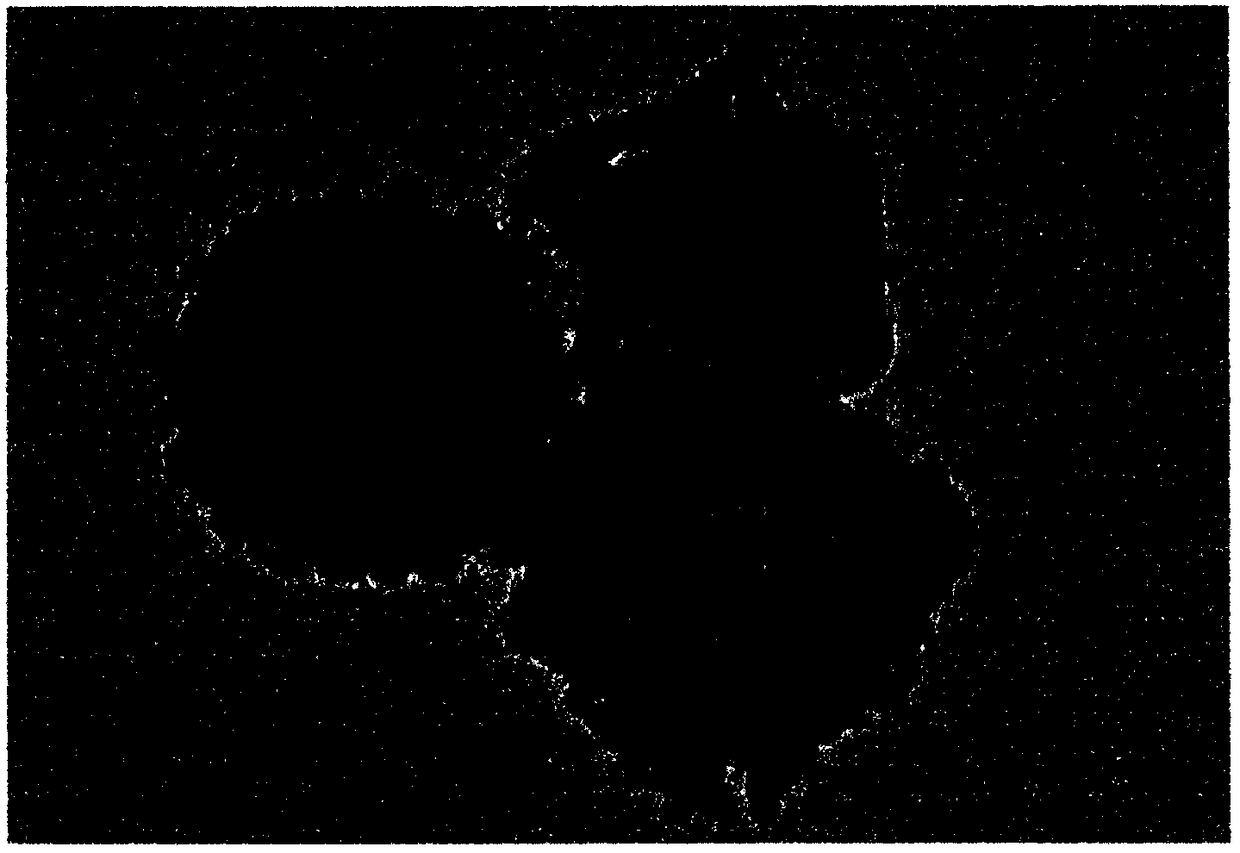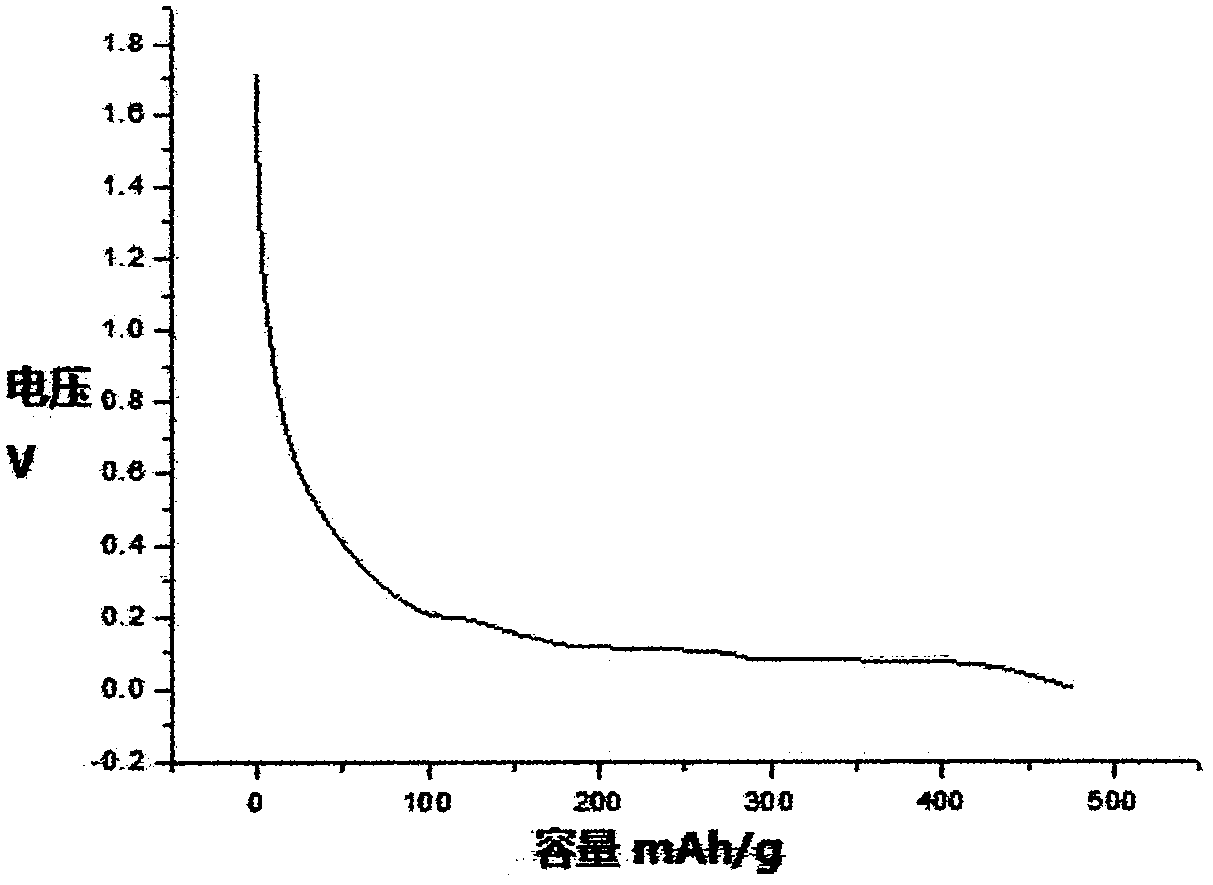A hollow structure silicon-carbon composite material prepared by a magnesium thermal reduction method and a preparation method thereof
A technology of silicon-carbon composite materials and reduction method, applied in structural parts, nanotechnology for materials and surface science, electrical components, etc., can solve the problem of reducing cycle life, reducing the reversible capacity of silicon-carbon composite materials, and the shedding of negative active materials and other problems, to achieve the effect of improving cycle life, increasing reversible capacity, and large reversible capacity
- Summary
- Abstract
- Description
- Claims
- Application Information
AI Technical Summary
Problems solved by technology
Method used
Image
Examples
Embodiment 1
[0032] (1) Polystyrene (PS) microsphere emulsion and SiO 2 Preparation of slurry:
[0033] Dissolve 3g of polyvinylpyrrolidone in 180g of water, add 9g of styrene, stir and heat to 70℃, then dissolve 0.2g of initiator azobisisobutylamidine hydrochloride in 30g of water, and add it to a glass reactor to react 24 After hours, a polystyrene (PS) microsphere emulsion is obtained, the particle size range of the microspheres is 200nm;
[0034] Grind SiO with a grinder in the presence of ethanol 2 And in SiO 2 Add acetic acid to control SiO 2 The pH of the slurry is 5.5, the mass solid content is 10%, and the SiO 2 SiO in slurry 2 The average particle size of the particles is 50nm;
[0035] (2) Polystyrene / silica core-shell structure composite (PS / SiO 2 ) Preparation:
[0036] Disperse 8g of polystyrene microsphere emulsion in 100g of water, stir for 10 minutes, continue to add 45g of ethanol, stir for 30 minutes, and mix 6g of SiO 2 The grinding liquid was slowly added dropwise to the above...
Embodiment 2
[0052] (1) Polystyrene (PS) microsphere emulsion and SiO 2 Preparation of slurry:
[0053] Dissolve 5g of polyvinylpyrrolidone in 180g of water, add 10g of styrene, stir and heat to 70℃, then dissolve 0.3g of initiator azobisisobutylamidine hydrochloride in 30g of water, add it to the reaction system and react for 20 hours , Obtain polystyrene (PS) microsphere emulsion, the particle size range of the microsphere is 100nm;
[0054] Grind SiO with a grinder in the presence of ethanol 2 And in SiO 2 Add itaconic acid to control SiO 2 The pH value of the slurry is below 5, the mass solid content is 8%, SiO 2 SiO in slurry 2 The average particle size of the particles is 30nm;
[0055] (2) Polystyrene / silica core-shell structure composite (PS / SiO 2 ) Preparation:
[0056] Disperse 9.0g polystyrene microsphere emulsion in 100g water, stir for 15 minutes, continue to add 50g ethanol, stir for 30 minutes, add 6g SiO 2 The grinding liquid was slowly added dropwise to the above mixed solution, s...
Embodiment 3
[0065] (1) Polystyrene (PS) microsphere emulsion and SiO 2 Preparation of slurry:
[0066] Dissolve 1g of polyvinylpyrrolidone in 180g of water, add 5g of styrene, stir and heat to 70°C, then dissolve 0.1g of initiator azobisisobutylamidine hydrochloride in 30g of water, and add it to a glass reactor for reaction 12 After hours, a polystyrene (PS) microsphere emulsion is obtained, the particle size range of the microspheres is 50nm;
[0067] Grind SiO with a grinder in the presence of ethanol 2 And in SiO 2 Add oxalic acid to control SiO 2 The pH value of the slurry is below 4.5, the mass solid content is 20%, SiO 2 SiO in slurry 2 The average particle size of the particles is 70nm;
[0068] (2) Polystyrene / silica core-shell structure composite (PS / SiO 2 ) Preparation:
[0069] Disperse 3.0g polystyrene microsphere emulsion in 100g water, stir for 12 minutes, continue to add 30g ethanol, stir for 30 minutes, and mix 30g SiO 2 The grinding liquid was slowly added dropwise to the above ...
PUM
| Property | Measurement | Unit |
|---|---|---|
| Particle size | aaaaa | aaaaa |
| Particle size | aaaaa | aaaaa |
| Particle size | aaaaa | aaaaa |
Abstract
Description
Claims
Application Information
 Login to view more
Login to view more - R&D Engineer
- R&D Manager
- IP Professional
- Industry Leading Data Capabilities
- Powerful AI technology
- Patent DNA Extraction
Browse by: Latest US Patents, China's latest patents, Technical Efficacy Thesaurus, Application Domain, Technology Topic.
© 2024 PatSnap. All rights reserved.Legal|Privacy policy|Modern Slavery Act Transparency Statement|Sitemap



